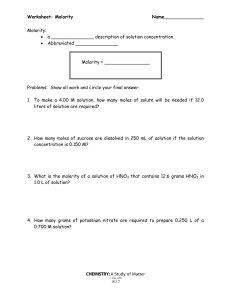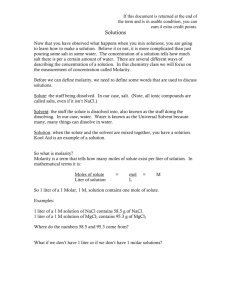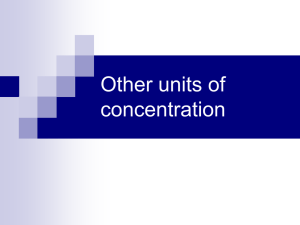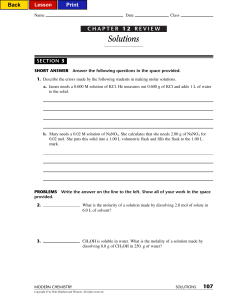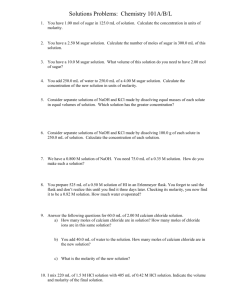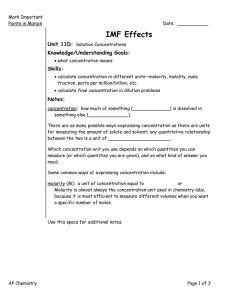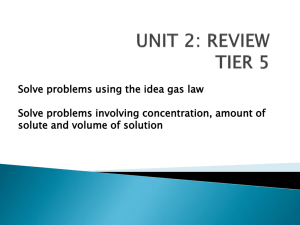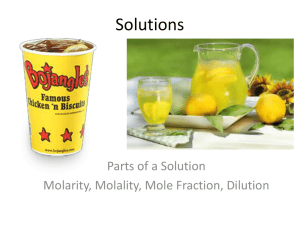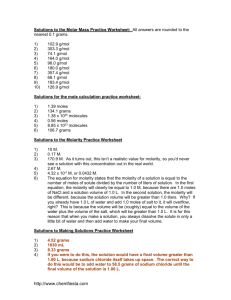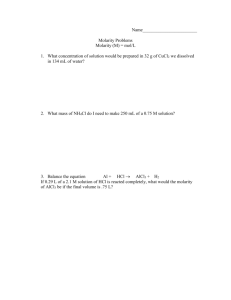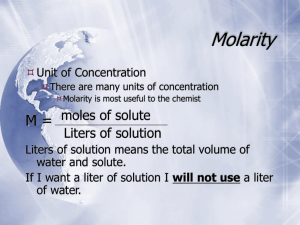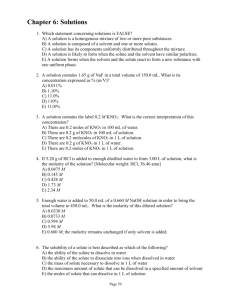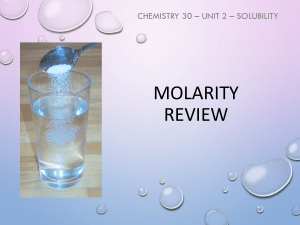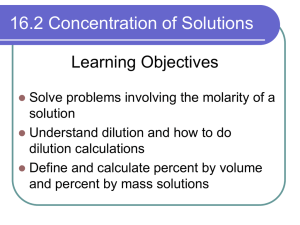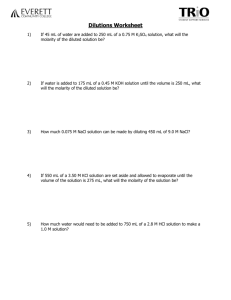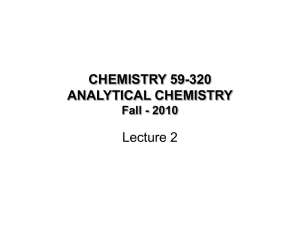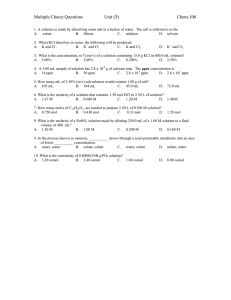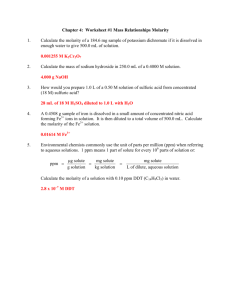doc
advertisement
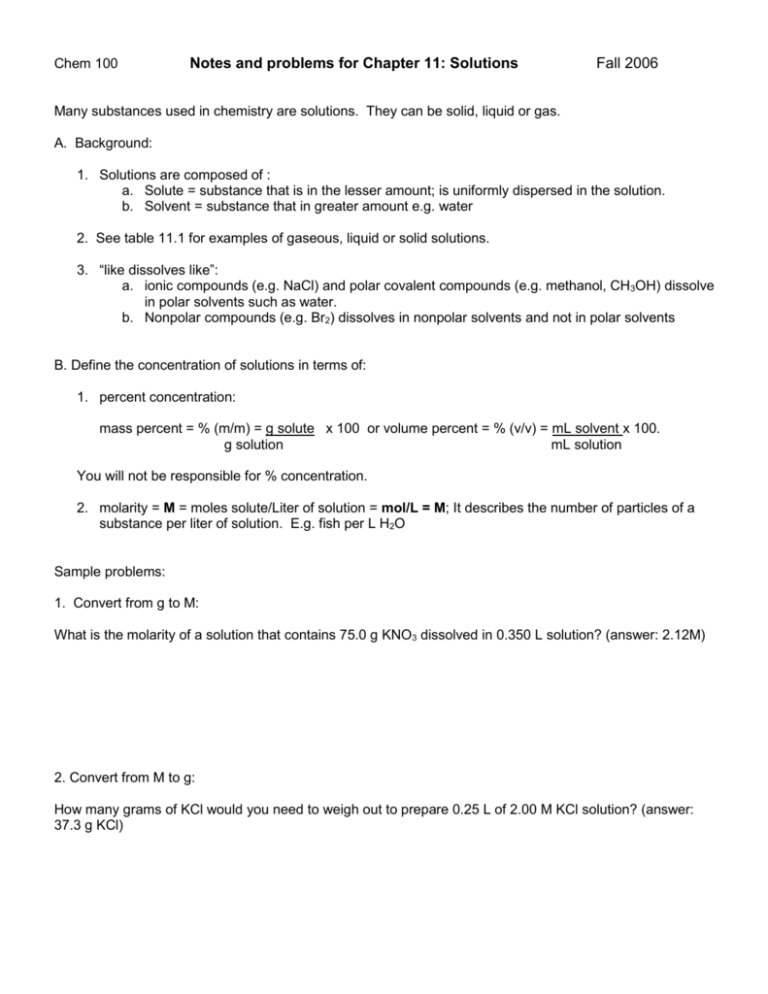
Chem 100 Notes and problems for Chapter 11: Solutions Fall 2006 Many substances used in chemistry are solutions. They can be solid, liquid or gas. A. Background: 1. Solutions are composed of : a. Solute = substance that is in the lesser amount; is uniformly dispersed in the solution. b. Solvent = substance that in greater amount e.g. water 2. See table 11.1 for examples of gaseous, liquid or solid solutions. 3. “like dissolves like”: a. ionic compounds (e.g. NaCl) and polar covalent compounds (e.g. methanol, CH3OH) dissolve in polar solvents such as water. b. Nonpolar compounds (e.g. Br2) dissolves in nonpolar solvents and not in polar solvents B. Define the concentration of solutions in terms of: 1. percent concentration: mass percent = % (m/m) = g solute x 100 or volume percent = % (v/v) = mL solvent x 100. g solution mL solution You will not be responsible for % concentration. 2. molarity = M = moles solute/Liter of solution = mol/L = M; It describes the number of particles of a substance per liter of solution. E.g. fish per L H2O Sample problems: 1. Convert from g to M: What is the molarity of a solution that contains 75.0 g KNO3 dissolved in 0.350 L solution? (answer: 2.12M) 2. Convert from M to g: How many grams of KCl would you need to weigh out to prepare 0.25 L of 2.00 M KCl solution? (answer: 37.3 g KCl) 3. Convert from M to L: How many mL of 2.00 M NaOH solution will provide 20.0 g NaOH? (answer: 0.25L) C. Dilutions Water is added; therefore, the volume increases and the concentration decreases M1V1 = M2V2 where M = molarity and V = volume in mL or L (make sure V1 and V2 is in the same units) e.g. What is the molarity of a solution prepared by diluting 0.18 L of 0.6 M KOH to a final volume of 0.540 L? (answer: 0.2M) e.g.2 A 0.3 M solution was of prepared by diluting15.0 mL of a 1.8 M KOH. What is the final volume (mL)? (answer: 90 mL) E. a. molarity x volume = moles, i.e. mol x L = mol L b. moles x 1L = volume (L). mol e.g. How many mL of 3.00 M HCl are needed to completely react with 4.85 g CaCO3? Molar mass of CaCO3 is 100.09. (answer: 32.3 mL) 2HCl (aq) + CaCO3 (s) → CaCl2 (aq) + CO2 (g) + H2O (l) e.g.2 How many liters of H2 gas at STP are produced when 12.5 g Zn react with excess HCl? (answer: 4.28L) Zn (s) + 2HCl (aq) → ZnCl2 (aq) + H2 (g)
